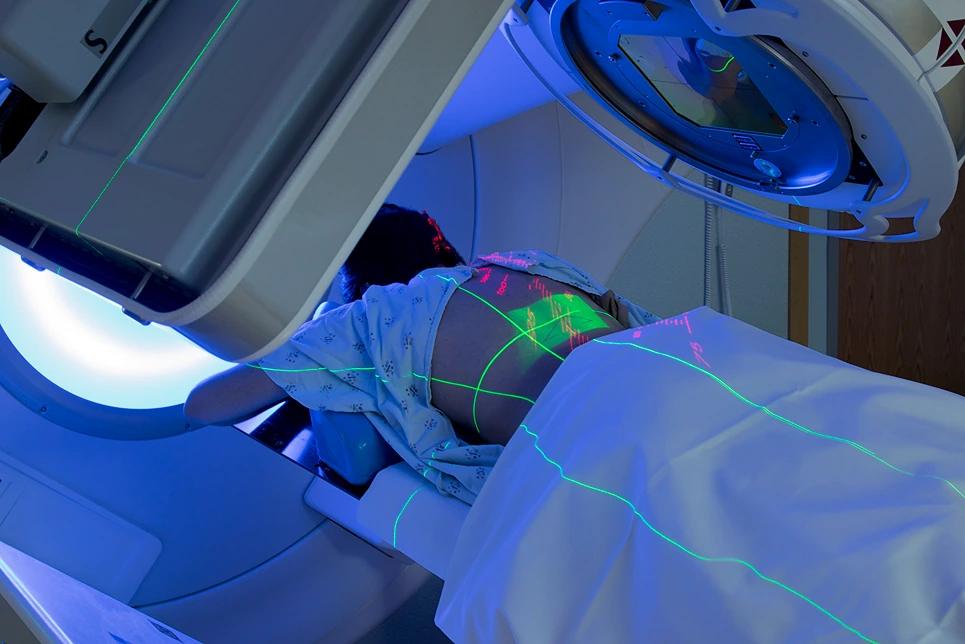

Learn the interaction between radiation therapy and Mohs surgery, including the safety, effectiveness, healing process, and alternatives for patients who have had both treatments.
Radiation therapy and Mohs surgery are two common treatments for skin cancer. But can you safely undergo Mohs surgery after having radiation treatment on the same area? This is an important question for skin cancer patients and their doctors when mapping out a treatment plan.

Mohs surgery and radiation therapy take very different approaches to treating skin cancer. Understanding their unique goals and methods is key to assessing how they may interact.
Mohs surgery is a precise, surgical technique used to remove certain common skin cancers layer by layer. The goal is to remove all cancerous cells while preserving as much healthy tissue as possible. During the procedure, each layer is examined under a microscope until no trace of cancer remains. This allows surgeons to pinpoint cancerous areas and customize the removal instead of estimating based on visible tumor size.
In contrast, radiation therapy aims to destroy cancer cells by targeting them with high-energy rays. This is typically done over a series of treatments to accumulate the desired radiation dose while minimizing exposure to surrounding healthy skin. The radiation beams are carefully focused on the tumor area, but some exposure to adjacent tissue is unavoidable.
While both treatments are highly effective for skin cancer, Mohs surgery offers greater precision by examining tissue samples as tumor is methodically removed. Radiation can damage small amounts of healthy skin in order to target the whole tumor area.
In general, yes – Mohs surgery is considered safe following radiation therapy to the same skin area. But there are some important caveats.
Radiation does lead to changes in the skin that can present additional risks with surgery. The affected skin may be thinner, tighter, and more fragile than before radiation. There is also a reduced blood supply and slower wound healing. Scarring from radiation may further impair healing.
These factors raise the chance of postsurgical complications like infections, poor closure of incisions, and delayed wound healing. Your Mohs surgeon will take great care to mitigate these risks. Steps like meticulous suturing techniques, antibiotic ointments, close follow-up monitoring, and gentle wound care will optimize healing after surgery.
It’s also vital to have an experienced Mohs surgeon do the procedure post-radiation. Their expertise working with sensitive skin helps ensure the best possible outcome.
As noted above, irradiated skin heals differently than normal skin due to changes caused by radiation. It’s fragile, poorly vascularized, and underactive. This impacts every phase of postsurgical healing.
During the inflammatory phase, radiation-damaged skin produces fewer nutrients and cells needed for proper wound healing. Granulation tissue formation is delayed. Contraction and new collagen development in the proliferation phase are also slower. And in the maturation phase, the irradiated skin cannot remodel collagen as efficiently, resulting in weaker scars.
Overall, the healing process after Mohs surgery on skin that has undergone radiation takes significantly longer – often weeks to months longer. Even years later, the surgical site may remain sensitive. Scars might be enlarged. It takes diligent wound care and monitoring to optimize results.

Yes, prior radiation therapy does present some additional considerations and challenges during Mohs surgery. The surgeon must take extra care due to the sensitivity of the irradiated skin.
One key issue is that radiation obscures the margin between cancerous and normal tissue. This margin guides how much tissue the surgeon removes to eliminate the entire tumor. But with radiation, the skin has a more homogeneous appearance under the microscope. Subtle cellular differences that would normally distinguish cancerous areas are blurred.
As a result, surgeons may have to remove larger margins of tissue to ensure full removal of the tumor when operating in a radiated field. More layers might be required during Mohs to get clear margins.
Meticulous hemostasis, gentler tissue handling, additional biopsies, and customized closure techniques are also needed to counteract the skin fragility from radiation. Despite the challenges, an experienced Mohs surgeon can successfully adapt the procedure.
What Are the Benefits of Having Mohs Surgery After Radiation Treatment?
Given the above factors, why would Mohs surgery still be recommended following radiation to the same area? There are a few key potential benefits.
First, Mohs allows precise, complete removal of any recurring or resistant cancer after radiation. Radiation may successfully destroy most cancerous cells. But any that remain can lead to recurrence. Mohs is the best technique to eradicate these residual tumors.
Second, radiation can make skin cancer margins more difficult to interpret. Mohs examines tissue microscopically during the procedure itself to definitively identify remaining cancer. This helps avoid recurrence and unnecessary removal of extra healthy tissue compared to other techniques.
Lastly, some skin cancer types like aggressive squamous cell carcinoma respond better to the combined approaches of radiation followed by Mohs surgery. Together they optimize clearance of the tumor.
The decision to perform Mohs surgery after radiation requires careful consideration of the risks and benefits outlined above. The surgeon will thoroughly assess several factors to determine if Mohs is appropriate. These include:
This comprehensive evaluation helps anticipate challenges, surgical complexity, risks like poor healing, and need for flap or graft repairs. Multidisciplinary planning provides the best perspective. Alternative options are always considered first. But if Mohs presents the best chance for long-term cure, an experienced Mohs surgeon can often safely perform the procedure after weighing all variables.

For some patients, the drawbacks of Mohs may outweigh the benefits after prior radiation. In these cases, other skin cancer treatment options are available. These include:
Discussion with both your dermatologist and radiation oncologist will help determine if additional radiation, one of the above options, or active surveillance without treatment are preferable to Mohs surgery in your unique situation.
The interactions between radiation therapy and Mohs surgery require extensive consideration when planning skin cancer treatment. While Mohs is possible after radiation, it does come with more surgical risks and challenges. However, for some patients Mohs offers the best prospect for effectively eliminating residual or recurrent cancerous cells.
Determining suitability requires assessing skin condition, cancer specifics, previous treatment results, and surgical expertise. With appropriate patient selection and surgeon experience, Mohs after radiation can successfully provide definitive removal of complex skin cancers.
If your desired appointment type or preferred provider is unavailable online, kindly call (978) 525-0100 for Peabody, MA and (603) 742-5556 for all New Hampshire locations. Alternatively please feel free to send us your request via the patient portal, or via email at info@dermskinhealth.com
*For medical dermatology appointments in MA please dial (978) 525-0100 or fill out the appointment request form above.